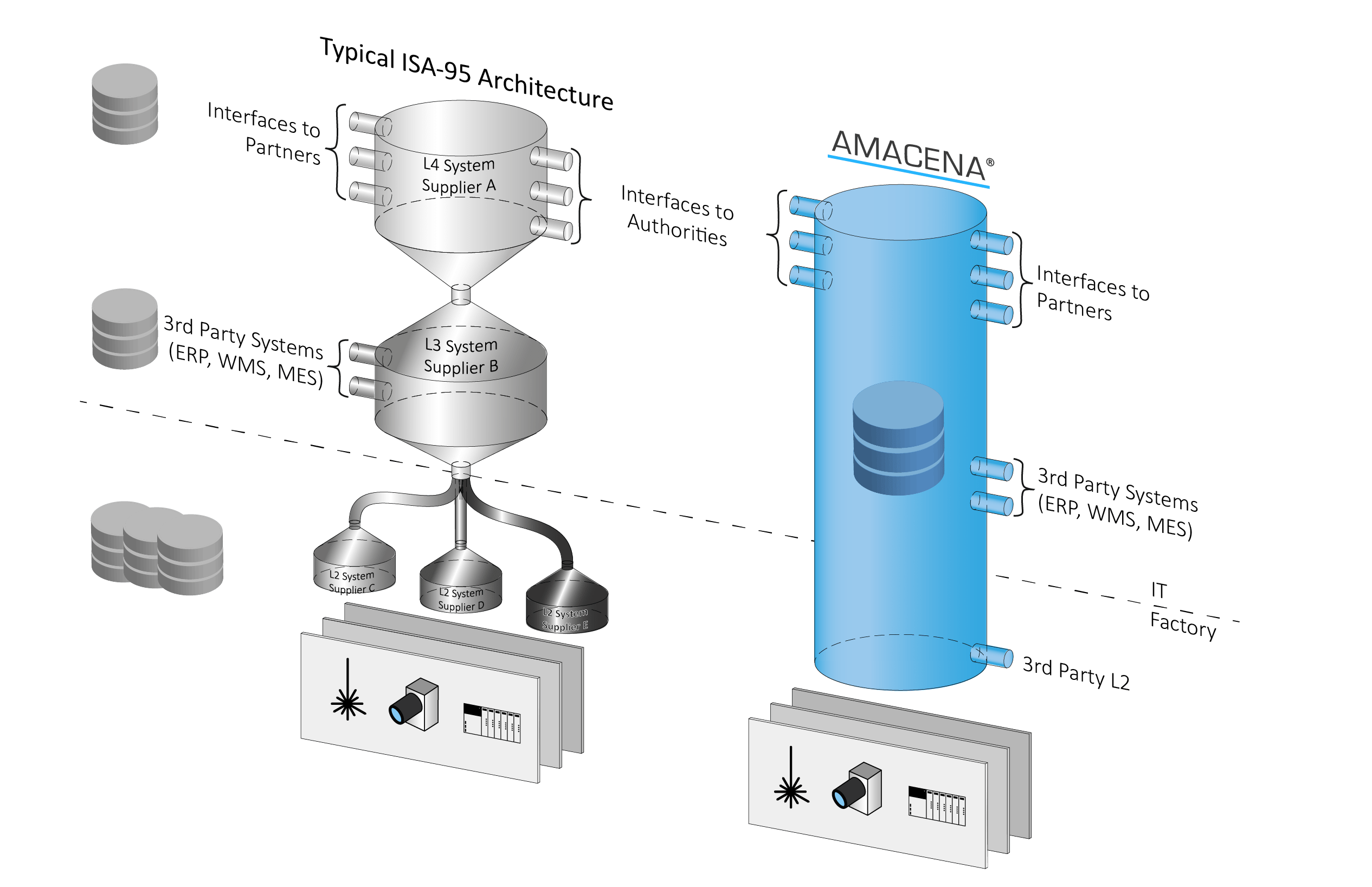Serialization Cloud as Single Master Data Source
The core of the Hicof product offering is the AMACENA Serialization Cloud. It combines all ISA-95 levels from 1 to 4 into a single system. By doing so, no interfaces between the ISA-levels are required and only one data repository ensures a single source of truth within the whole enterprise for all data.
This contrasts the typical ISA-95 architecture which consist of multiple independent Softwares that often do not come from the same vendor. Consequently, the exchange of Master Data (product settings, machine settings, printer and camera settings, aggregation hierarchies…) is often very limited or even impossible which leads to cumbersome and error prone manual synchronization processes of master data.

One expert for Service
The Hicof AMACENA Serialization Cloud offers a single software layer from the machines to the enterprise level. This is paired with VPN based remote support capabilities which are hosted on the central AMACENA database. This offers the unique capability of offering one support line from machine level up to every system function at enterprise level. This eliminates coordination activities by the customers to bring the involved vendors into the issue resolution process.
This contrasts the typical ISA-95 architecture often consist of various Softwares and Machines which all come with individual support services. As the systems come from various vendors it is very difficult for the service technician to investigate issues that might be caused by a neighboring software. Finally, the customer needs to coordinate the service activities himself which requires more time and comes at increased cost.
No Internal Interfaces
The Hicof AMACENA Serialization Cloud offers a uniform software that stretches from the machines to the enterprise level. Thereby, highly resilient and stable (automatic recovery, conflict detection and SSL/TLS encryption) communication technology is used between the machines and the central data storage. This strong backbone builds the prerequisite for a seamless user experience and easy upgrade-ability where data synchronization issues are unknown.
This contrasts the typical ISA-95 architecture which is often build up with various Softwares and Machines that communicate via XML file based communication interfaces. These interfaces do mostly not come with automatic recovery functions or conflict detection which leads in practical work often to communication and data consistency issues which require manual reconciliation. Additionally, the internal IT interfaces limit the system development as every update or a single system component requires a full compatibility test between the new software and the existing infrastructure.


